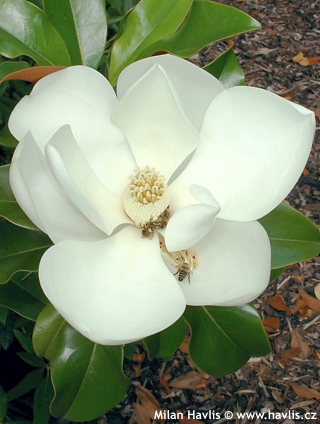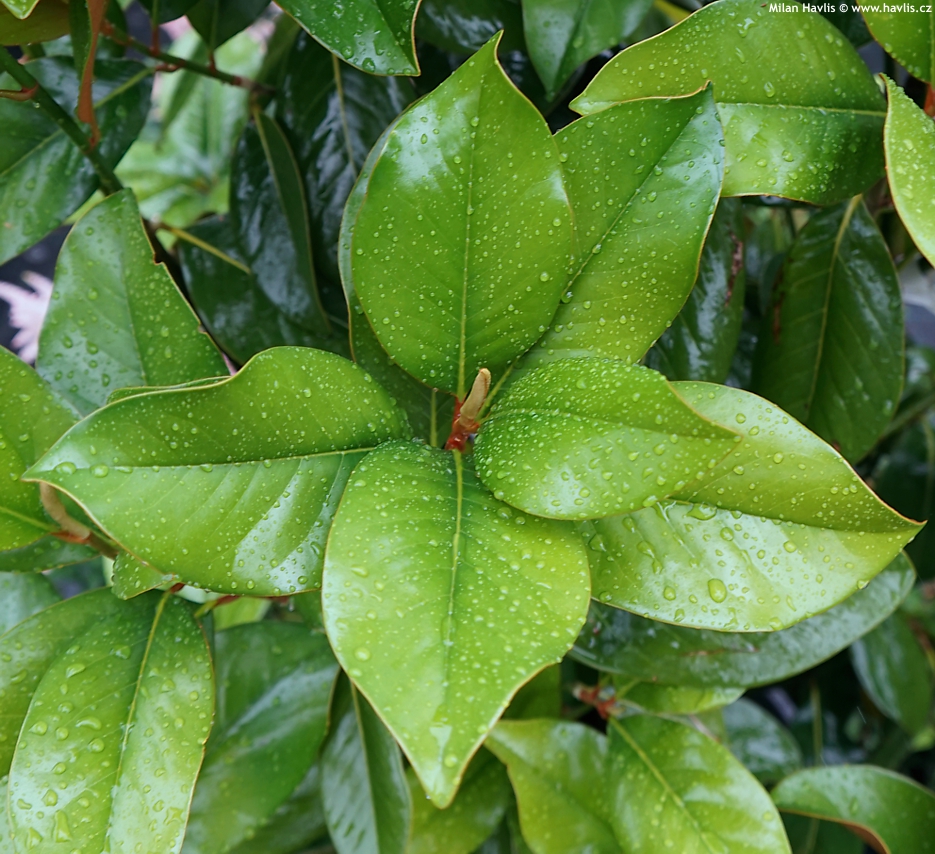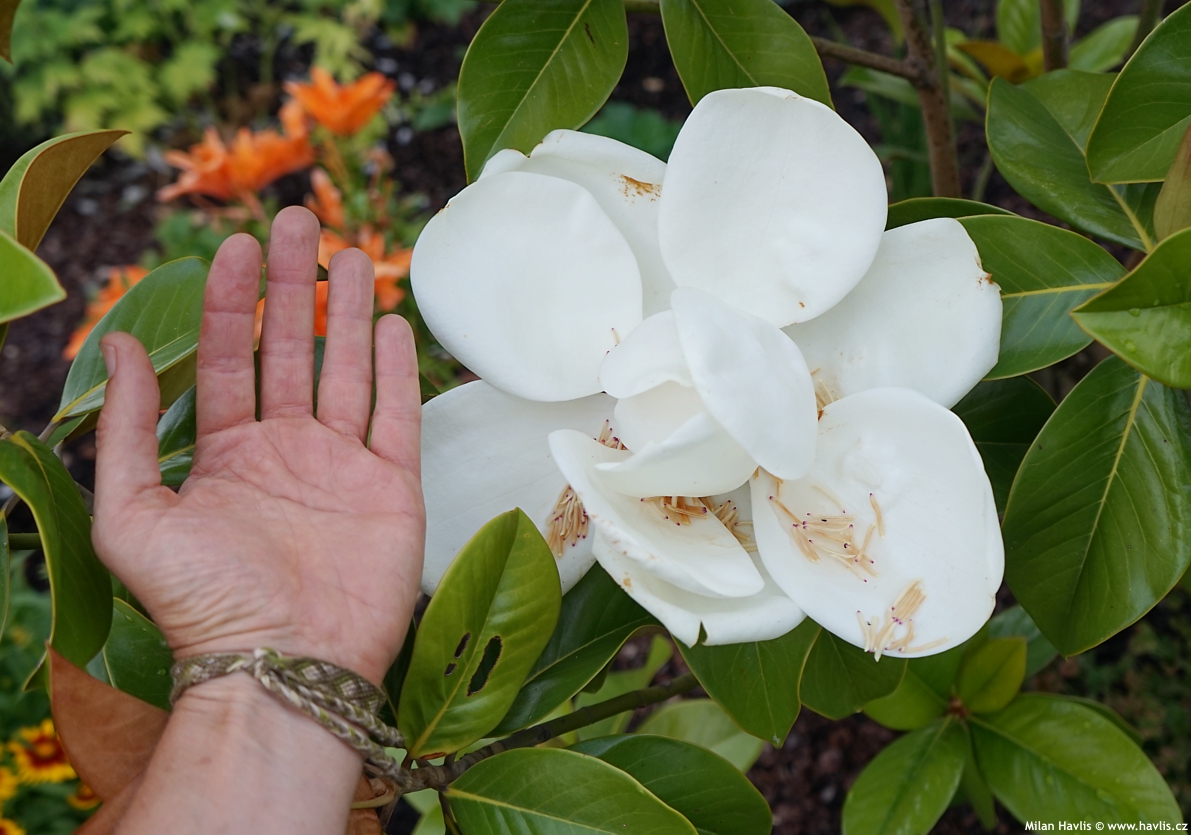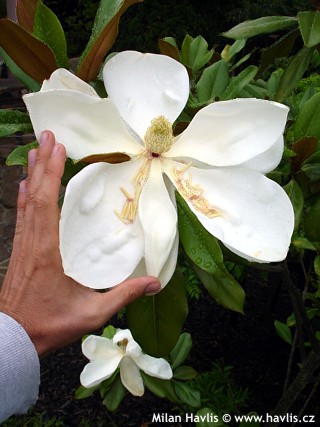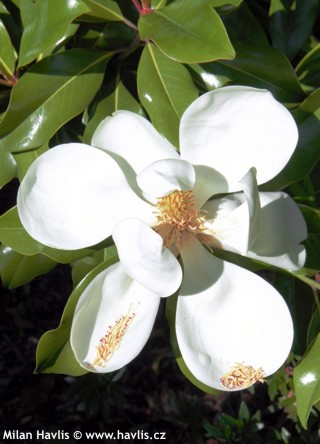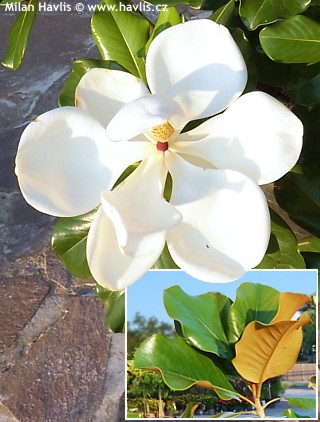Magnolia grandiflora 'SAMUEL SOMMER' southern magnolia, bull bay
Magnolia
Evergreen (southern) magnolias are flowering queens among ornamental trees. We choose the hardiest and most beautiful varieties that can live happily in zones 6 and up. Samuel Sommer is an American cultivar of bull bay magnolia introduced by Maunsell van Rensselaer (1897-1972) during his directorship of Saratoga Horticultural Foundation in Santa Cruz, California, USA. After graduation from the University of California he devoted all his life to plants. Not so much planting or breeding but predominantly selecting, identifying, and targeting the right species for the right location. He was a member or head of several horticultural institutions, and he helped several US states choosing their national trees. In 1965, at the age of 68, he was named to the Horticultural Hall of Fame.
Samuel Sommer is an exceptional evergreen magnolia praised for both its beauty as well as durability. During the first decade of its existence it proved resistant to cold, strong wind, and freezing rain and snow. It belongs to the few of the species producing the largest flowers ever seen – they are 25-35 cm across, creamy white, composed of 3 tiers of 4 petals, strongly and sweetly scented. Their fragrance attracts not only bees and other insects, but also most perfume producers and all passers-by, especially in late afternoon and early evening when it releases its rich, sweet and citrus fragrance several meters around. Each flower opens for one or two days only but is followed by another so the whole plant produces flowers from June until September. The older and stronger the plant the more flowers appear in continuity. It usually blooms from mid June until late August, weather conditions pending.
Its evergreen leaves are leathery and extremely large: 20-25 cm long and 10-15 cm wide. They are broadly obovate, slightly undulated, dark green, glossy and conspicuously veined, while the undersides are covered with cinnamon brown, suede-like indumentum underneath which protects them against drying winds. Though evergreen, there is always some leaf drop, usually in late spring when the plant starts making new shoots and flower buds. Significant foliage loss occurs mainly within 1-4 years from planting so don’t be alarmed that the plant is ill, this is the way it grows.
It grows medium fast (30-50 cm per year) into a well-branched, narrowly pyramidal, large shrub. It can easily be trained into a mid-sized tree with a rounded canopy. For a denser habit and smaller size, it can be pruned when young and then every 3-5 years in late April. As it flowers at the tips of ripe wood its blooming may be shy the year you prune it.
Southern magnolia is very hungry. It needs acidic, fertile, reasonably drained but not purely sandy soil. Clay in lower parts is beneficial. We strongly suggest using mycorrhizal fungi for its roots, they work miracles especially for large plants whom they help establish without any signs of defect. Now bring your attention to fertilizing, most importantly during its first three or four years after transplanting it needs regular feeding to keep all its foliage and to produce flowers freely. Use any sort of fertilizer for ericaceous plants and apply it according to instructions from May until late July. Keep the plant’s roots constantly moist during this period and don’t forget to water it also in winter when the ground is not frozen. Then it will fully establish and will not suffer from summer droughts and will not need extra feeding as its roots will be deep enough to find their own food. Magnolias detest stomping on their roots as well as heavy load of gravel or stones – use only bark mulch in a sufficient volume to keep the roots from quick temperature swings in winter and from drying out during summer. Choose only sunny locations, possibly with winter shade that may be welcome in areas with long-lasting winters. Extremely hardy to -31°C (USDA zone 5a) for a limited period of time, and generally suggested for zones 5b and higher.
Last update 18-07-2020

































